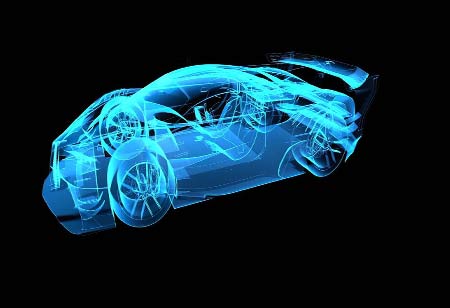Thank you for Subscribing to Auto Business Outlook Weekly Brief
Engineering the Future: The Role of Automotive Engineering in Shaping the Automotive Industry
Automotive engineering is a cornerstone of the automotive industry, driving innovation, performance, and safety in vehicles.

By
Auto Business Outlook | Wednesday, June 21, 2023
Stay ahead of the industry with exclusive feature stories on the top companies, expert insights and the latest news delivered straight to your inbox. Subscribe today.

Automotive engineering is at the heart of automotive innovation, driving advancements in electric powertrains, autonomous technologies, lightweight materials, connectivity, and sustainable practices.
FREMONT, CA: Automotive engineering is a cornerstone of the automotive industry, driving innovation, performance, and safety in vehicles. As the industry undergoes rapid transformation, automotive engineering plays a key role in shaping the future of mobility. This article explores the multifaceted nature of automotive engineering, highlighting key trends, advancements, and challenges redefining the industry.
1. Electric and Hybrid Powertrain Development: The shift towards sustainable mobility has propelled automotive engineering towards electric and hybrid powertrain development. Engineers optimize electric motors, batteries, and control systems to maximize efficiency and range. Innovations in regenerative braking, energy recovery, and charging infrastructure are also focal points. Automotive engineering is driving the advancement of electric and hybrid vehicles, enabling cleaner and more sustainable transportation solutions.
2. Autonomous Vehicle Technology: Autonomous vehicles represent the next frontier in automotive engineering. Engineers are developing advanced driver-assistance systems (ADAS) and autonomous driving technologies that enhance safety and redefine the driving experience. Automotive engineering encompasses the design of sensor systems, machine learning algorithms, and robust control systems that enable vehicles to perceive, interpret, and respond to their surroundings. The integration of AI, computer vision, and sensor fusion is shaping the autonomous future of mobility.
3. Lightweight Materials and Vehicle Structures: Automotive engineers are constantly seeking ways to enhance vehicle performance, fuel efficiency, and safety. Lightweight materials, such as advanced high-strength steel, aluminum, and carbon fiber composites, are being utilized to reduce weight without compromising structural integrity. Automotive engineering is vital in optimizing vehicle structures, utilizing computer-aided engineering (CAE) simulations and crash testing to ensure the highest levels of safety and occupant protection.
4. Connected Car Technologies: The integration of connectivity in vehicles is revolutionizing the automotive industry, and automotive engineering is at the forefront of this transformation. Engineers are developing systems that enable seamless connectivity, vehicle-to-vehicle (V2V) and vehicle-to-infrastructure (V2I) communication, and cloud-based services. This connectivity enhances safety, provides real-time information, and enables advanced features such as remote diagnostics, over-the-air updates, and personalized infotainment experiences.
5. Human-Machine Interface (HMI) Design: As vehicles become increasingly sophisticated, automotive engineering focuses on creating intuitive and user-friendly human-machine interfaces (HMIs). Engineers are designing interactive displays, voice recognition systems, and gesture control interfaces that enhance driver comfort, convenience, and safety. HMI design considers ergonomics, visual appeal, and seamless integration of technology to create a seamless and enjoyable driving experience.
6. Sustainable Manufacturing and Design: Automotive engineering encompasses sustainable practices in manufacturing and design processes. Engineers work towards reducing waste, energy consumption, and emissions during vehicle production. Virtual prototyping, simulation tools, and design optimization techniques minimize material waste and streamline production. Automotive engineering also embraces circular economy principles, exploring ways to recycle and repurpose end-of-life vehicle components, further reducing environmental impact.
Conclusion: Automotive engineering is at the heart of automotive innovation, driving advancements in electric powertrains, autonomous technologies, lightweight materials, connectivity, and sustainable practices. The expertise and ingenuity of automotive engineers are shaping the future of mobility, transforming vehicles into safer, more efficient, and intelligent modes of transportation. As the industry continues to evolve, automotive engineering will remain a driving force, pushing the boundaries of what is possible and revolutionizing the automotive landscape.






